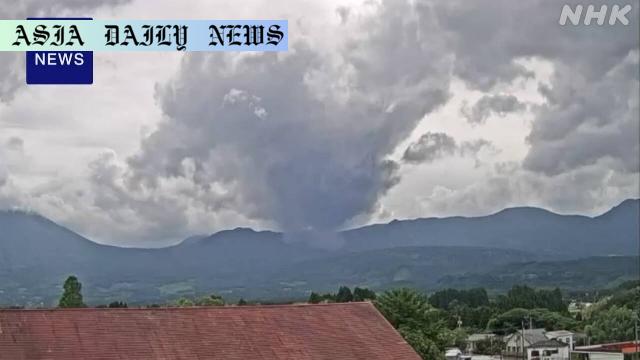Mt. Shinmoe: Officials confirm eruption with volcanic ash falling over Miyazaki and issue a warning for areas within two kilometers of the crater.
Mt. Shinmoe erupted on Sunday after a seven-year dormancy.
Volcanic plume reached over 500 meters, with ash falling in Miyazaki.
Authorities warn of potential pyroclastic flows and falling rocks.
Ground movements suggest continued volcanic activity and magma expansion.

Mt. Shinmoe Eruption Shakes Southwestern Japan
Sunday evening marked a dramatic return to activity for Mount Shinmoe, a stratovolcano located in the Kirishima mountain range between Kagoshima and Miyazaki prefectures in southwestern Japan. Erupting at approximately 4:37 PM, the volcano sent a towering plume of ash and smoke over 500 meters into the sky. While the eruption did not raise the volcanic alert level beyond 2, authorities have urged vigilance among nearby residents due to potential hazards.
Immediate Impact and Ashfall
Following the eruption, volcanic ash began drifting eastward towards Miyazaki Prefecture. Residents of Takaharu Town reported noticeable ashfall, with further evidence provided by security footage from Kobayashi City. Despite extensive ash dispersion, there was no immediate confirmation regarding the presence of volcanic rocks within the plume. Past eruptions of Mt. Shinmoe, especially the significant activity in 2011, were notable for their discharge of light rocks, ash, and damaging air vibrations. As of this latest eruption, signs of magma expansion and a sharp rise in volcanic earthquakes suggest an ongoing risk.
Safety Measures and Warnings
Authorities are maintaining the current alert level at 2 on the Japan Meteorological Agency’s five-level scale. They caution those within a two-kilometer radius of the crater against potential falling rocks, while also warning of pyroclastic flows that could extend up to one kilometer from the eruption site. For communities located in downwind areas, vigilance remains necessary to address hazards associated with falling ash and smaller debris.
Historical Context and Activity Monitoring
This eruption marks the first major activity from Mt. Shinmoe in seven years, emphasizing the volatile and unpredictable nature of stratovolcanoes. Back in 2011, a significant eruption caused widespread disruption due to heavy ashfall and the release of airborne debris, ultimately resulting in both property damage and safety concerns. Current ground movement data show evidence of subsurface pressure building within the volcano, underscoring the importance of ongoing monitoring by seismic and geological experts. Such analysis aids in assessing the likelihood of future eruptions, ensuring both preparedness and public safety.
Commentary
The Magnetism of Natural Forces
The recent eruption of Mt. Shinmoe is a stark reminder of nature’s vast and unpredictable power – a force capable of reshaping landscapes and lives within moments. Volcanic activity has always fascinated humanity, inspiring awe and fear in equal measure. The sudden expulsion of ash and magma that punctured the quiet skies of southeastern Japan offers insight into our planet’s dynamic inner workings. Yet, beyond scientific intrigue lies a pressing need for proactive safety measures and readiness.
Preparedness Versus Complacency
While the volcanic alert level remains steady at 2, the inherent risks should not be underestimated. As demonstrated by the sudden increase in ground movements and volcanic earthquakes on Sunday, such phenomena can escalate quickly. The Kagoshima Meteorological Office’s warnings about potential falling rocks and ash hazards, especially within a two-kilometer radius, should emphasize the importance of vigilance. Communities near Mt. Shinmoe – and indeed anywhere near a volatile geological feature – must ensure their preparedness plans are thorough and actionable.
A Global Perspective
Each natural disaster serves as a valuable lesson for communities around the globe. Mt. Shinmoe’s activity is a call for improved monitoring technologies, broader education on volcano safety measures, and better integration of scientific research with public information campaigns. Across the globe, particularly in regions with active volcanoes, governments and local authorities must work hand-in-hand to foster disaster resilience. The eruption, although limited in its immediate danger, underscores the critical need for balancing knowledge, tools, and preparedness to mitigate the unpredictable risks posed by volcanic forces.


